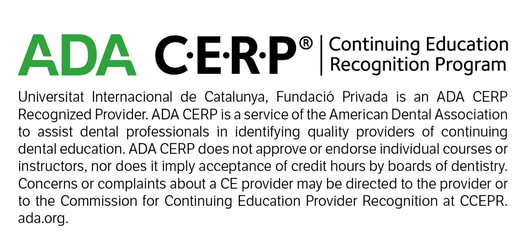Intensive Theoretical-Practical Course in Paediatric Dentistry
Type of programme
Specialization courses
Duration
between 03-06-2024 and 07-06-2024
Credits
5 ECTS
Price
€2,000.00. *Prices corresponding to the 2023-2024 academic year.
Places
Limited
Campus
Schedule
9 a.m. to 8 p.m.
Language
Spanish (secondary language: English)
This qualification is aimed at graduates who want know about the most frequently-used treatments for paediatric patients as well as how to diagnose these patients.
Course objectives
- Full assessment of the paediatric patient.
- Carry out a correct diagnostic procedure.
- Plan treatment.
- Establish a preventative protocol
- Incorporate behavioural management techniques to perform treatments based on excellence.
- Decide on correct intervention protocols, to treat the patient in the shortest possible time.
Competences to be acquired by students
The student will be ready to make a good diagnosis and draw up a subsequent treatment plan.
Who is it aimed at
-
Holders of an undergraduate/Bachelor’s degree in Dentistry; stomatologists
Course coordinator
- Dra. Teresita Patricia Martínez
-
Dr Francisco Guinot
Prerequisites & admissions
-
To hold a bachelor’s/undergraduate degree in dentistry or medicine (having specialised in stomatology)
